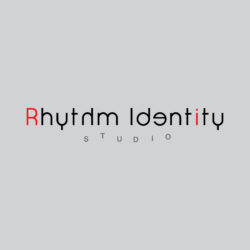In Rhythm Identity Dance Academy, we teaches Salsa both in On1 and On2 style. So what is Salsa?

In Rhythm Identity Dance Academy, we teaches Salsa both in On1 and On2 style. So what is Salsa?
According to Wikipedia, Salsa is a popular form of social dance that originated in the Caribbean. The movements of salsa have origins in Puerto Rican bomba and plena, Cuban Son, cha-cha-cha, mambo and other dance forms. The dance, along with the salsa music, the dance originated in the mid-1970s in New York.
In many styles of salsa dancing, as a dancer shifts their weight by stepping, the upper body remains level and nearly unaffected by the weight changes. Weight shifts cause the hips to move. Arm and shoulder movements are also incorporated. The Cuban Casino style of salsa dancing involves significant movement above the waist, with up-and-down shoulder movements and shifting of the ribcage.
The arms are used by the “lead” dancer to communicate or signal the “follower,” either in “open” or “closed” position. The open position requires the two dancers to hold one or both hands, especially for moves that involve turns, putting arms behind the back, or moving around each other, to name a few examples. In the closed position, the leader puts the right hand on the follower’s back, while the follower puts the left hand on the leader’s shoulder.
In the original Latin American form, the forward/backward motion of salsa is done in diagonal or sideways with the 3-step weight change intact.
In some styles of salsa, such as the New York style, the dancers remain mostly in front of one another (switching places), while in Latin American styles, such as Cuban style, the dancers circle around each other, sometimes in 3 points. This circular style is inspired by Cuban Son, specifically to the beat of son montuno in the 1920s.
However, as it is a popular music, it is open to improvisation and thus it is continuously evolving. Modern salsa styles are associated and named to the original geographic areas that developed them. There are often devotees of each of these styles outside their home territory.
Characteristics that may identify a style include: timing, basic steps, foot patterns, body movement, turns and figures, attitude, dance influences and the way that partners hold each other. The point in a musical bar music where a slightly larger step is taken (the break step) and the direction the step moves can often be used to identify a style.
Incorporating other dance styling techniques into salsa dancing has become very common, for both men and women: shimmies, leg work, arm work, body movement, spins, body isolations, shoulder shimmies, rolls, even hand styling, acrobatics and lifts.
Latin American styles originate from Puerto Rico, Cuba and surrounding Caribbean islands.
Welcome to Rhythm Identity Dance Academy. Rhythm Identity or RI for short, is a dance studio based in Taman Tun Dr. Ismail. Established since 2006, RI has been educating and provide dance training to people of all walks of life.
From students to retirees, the students of RI learn a myriad of dance in our curriculum: Salsa, Bachata, Zouk, Kizomba, West Coast Swing, Pole and Aerial, Fly Yoga, HIIT and Zumba. We don’t see Rhythm Identity just as a dance academy, but also as a family. Come talk to us and allow us to help you find the program that suits your needs.

Salsa is a dance form with origins from the Cuban Son (circa 1920s) and Afro-Cuban dance. It is generally associated with the salsa music style, although it may be danced under other types of music with an 8-count rhythm.
© 2025 coursetakers.com All Rights Reserved. Terms and Conditions of use | Privacy Policy